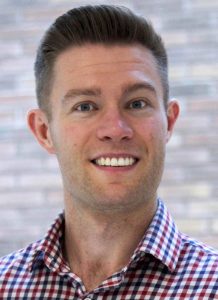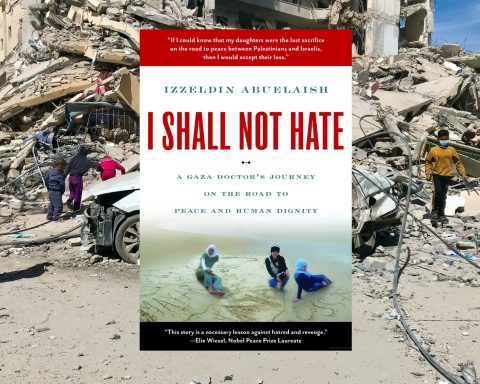 Richard Armitage is a GP and Public Health Specialty Registrar, and Honorary Assistant Professor at the University of Nottingham’s Academic Unit of Population and Lifespan Sciences. He is currently providing primary care to internally displaced people in the east of Ukraine. He is on twitter: @drricharmitage
Richard Armitage is a GP and Public Health Specialty Registrar, and Honorary Assistant Professor at the University of Nottingham’s Academic Unit of Population and Lifespan Sciences. He is currently providing primary care to internally displaced people in the east of Ukraine. He is on twitter: @drricharmitage
Much attention has been focused on the nearly 5 million refugees that have left Ukraine since the beginning of the Russian invasion of the country on 24 February 2022,1 and calls have been made to secure essential resources – including finances, facilities and healthcare – to safeguard the physical and mental health of this vulnerable population in its receiving countries, 2,3,4 including the UK.5 However, while these calls for compassionate humanitarianism are entirely appropriate and immediately required, the provision of crucial assistance to the vulnerable populations that still remain in Ukraine – groups that are likely to harbour health needs that are generally greater than those that have fled the country – must be urgently delivered.
As such, the general rule holds that ability to escape Ukraine is positively associated with socioeconomic status and good health.
Although many exceptions doubtlessly exist, those that have successfully managed to escape Ukraine, and are now therefore labelled with refugee status, generally have the greatest means by which to do so. These resources, including higher levels of education, personal contacts in receiving countries, and access to adequate finances and private transportation, not only enable relatively advantaged individuals to reach safety first, but are associated with good pre-existing health status and the capacity to acquire accommodation, food and water, and healthcare in receiving countries. As such, the general rule holds that ability to escape Ukraine is positively associated with socioeconomic status and good health.
Consequently, those that remain in Ukraine (other than men aged 18-60 years who have been prevented from leaving the country since a general military mobilisation was declared on 24 February 2022),6 especially those in close proximity to hostilities, are disproportionately members of lower socioeconomic groups. As such, these groups are simultaneously encumbered with the greatest burden of disease, which consists of concerning background rates of non-communicable disease (especially cardiovascular disease, diabetes mellitus, and chronic respiratory conditions) and communicable disease (especially drug-resistant tuberculosis, HIV, and viral hepatitis, alongside low national vaccination rates).4 Accordingly, those of lowest prosperity, poorest health, and highest age are the least likely to have escaped the dangers posed by Russian aggression,7 meaning it is these groups that are most likely to have remained in their homes in assaulted cities such as Luhansk, Donetsk and Kharkiv, or to have fled the shortest possible distances to the relatively safety of Ukrainian cities such as Zaporizhzhia, Dnipro and Poltava.
Paradoxically, it is this same group to which high quality health care is least accessible, thereby creating a variant of the inverse care law in the theatre of active conflict.
Many of those still residing in embattled cities have been sheltering in place for multiple weeks, often below ground level in uninhabitable conditions, or have taken up arms as civilian combatants. This has created an enormous burden of disease – above that disproportionately borne by these vulnerable groups prior to the war’s commencement – including traumatic and musculoskeletal injuries, uncontrolled chronic disease, acute illness, dehydration and malnutrition, poor sanitation and hygiene, psychological injury, and mental health deterioration. However, despite the urgency and scale of these health needs, the health systems operating in beleaguered cities have largely collapsed, often as a result of deliberate targeting by Russian forces, while humanitarian assistance is increasingly unable to access the most desperate locations due to intolerable security risks.8 Simultaneously, the vast migration of citizens who have escaped to neighbouring cities within Ukraine – constituting over 7 million internally displaced people (IDP)9 – places an immense and increasing strain on the existing primary and secondary health services in the east of the country, and further concentrates this elevated burden of disease in a state-funded health system that was over-stretched and under reform prior to the outbreak of war.10 While some IDPs access private accommodation in neighbouring cities, the least affluent are accommodated in temporary evacuee centres fashioned from repurposed buildings such as schools, nurseries and gymnasiums, which are often over-crowded and remotely located. Accordingly, it is IDP with the fewest resources that face the greatest barriers to accessing the living conditions and quality healthcare essential for the maintenance and promotion of health and wellbeing.
As such, it is generally those Ukrainians who remain in their home country, especially those located closest to Russian hostilities, who bear the greatest burden of disease and associated health needs, rather than those who have escaped the country and are now refugees. Paradoxically, it is this same group to which high quality health care is least accessible, thereby creating a variant of the inverse care law in the theatre of active conflict.11 The deep injustice of this situation is entirely unacceptable to the public health, humanitarian, and clinical healthcare communities worldwide, and necessitates the immediate cessation of hostilities in Ukraine, especially those that target non-combatants and healthcare facilities, and the free passage of medical assistance to those Ukrainians who require it most.
References
- UNHCR. Operational Data Portal: Ukrainian Refugee Situation. https://data2.unhcr.org/en/situations/ukraine [accessed 19 April 2022]
- M Giżewska et al. Caring for Ukrainian refugee children with acute and chronic diseases. The Lancet 11 April 2022. DOI: 10.1016/S0140-6736(22)00578-5
- A Kamenshchikova et al. Health-care provision for displaced populations arriving from Ukraine. The Lancet Infectious Diseases 08 April 2022. DOI: 10.1016/S1473-3099(22)00225-0
- Ioffe et al. Meeting the health challenges of displaced populations from Ukraine. The Lancet 11 March 2022; 399(10331): 1206-1208. DOI: 10.1016/S0140-6736(22)00477-9
- N Khan. Supporting primary healthcare in Ukrainian migrants. BJGP Life 08 April 2022. https://bjgplife.com/supporting-primary-healthcare-in-ukrainian-migrants/ [accessed 19 April 2022]
- T Qiblawi and C Alvardo. Ukrainian males aged 18-60 are banned from leaving the country, Zelensky says in new declaration. CNN 24 February 2022. https://edition.cnn.com/europe/live-news/ukraine-russia-news-02-24-22-intl/h_4309a4916d57670f85519210a07fb2c9 [accessed 19 April 2022]
- B Armocida et al. Older people: forgotten victims amid the Ukrainian humanitarian disaster. The Lancet Public Health 06 April 2022. DOI: 10.1016/S2468-2667(22)00087-1
- S Ahsan. Seeking accountablity for Ukraine health-care attacks. The Lancet 26 March 2022; 399(10331): 1215-1216. DOI: 10.1016/S0140-6736(22)00569-4
- IOM. Migration Data Portal: Ukraine. https://www.migrationdataportal.org/ukraine/crisis-movements [accessed 19 April 2022]
- P Romaniuk and T Semigina. Ukrainian health care system and its chances for successful transition from Soviet legacies. Globalization and Health 2018; 14(116). DOI: 10.1186/s12992-018-0439-5
- JT Hart. The Inverse Care Law. The Lancet 27 February 1971; 297(7696): 405-412. DOI: 10.1016/S0140-6736(71)92410-X
Featured image by Olga Subach on Unsplash







Richard Armitage is a GP and Public Health Specialty Registrar, and Honorary Assistant Professor at the University of Nottingham’s Academic Unit of Population and Lifespan Sciences. At time of writing he was providing primary care to internally displaced people in the east of Ukraine. He is on twitter: @drricharmitage
Disaster responders operating in humanitarian contexts – such as healthcare professionals deploying to and practicing in active war zones, refugee camps, and the ground zero of famines, earthquakes and devastating hurricanes – often experience a plethora of negative emotions due to perceived or actual transgressions of their core ethical principles. Gustavsson and colleagues describe this ‘moral distress’ as a stress reaction triggered by the responder being unable to discharge their deeply held moral values in various situations during disaster responses, such as when the individual is hindered from taking what they believe to be the morally required action due to external obstacles (including being associated with or affected by the morally questionable actions and decisions of others), contextual limitations (including the absence of the required equipment, medications, or specialist facilities to deliver the morally required outcome), and personal failings of the individual’s character (akin to weakness of will or moral akrasia).1 While moral stress is a normative response to the ethical challenges frequently experienced by disaster healthcare responders, the subsequent emergence of moral distress is dependent upon the intensity, duration and frequency of the moral challenges giving rise to moral stress. Without successfully identifying and managing moral distress, harmful secondary consequences may subsequently emerge in affected responders including both those of a moral concern – such as moral residue, moral numbness, and moral detachment – and those of a psychological nature – such as work exhaustion, compassion fatigue, and professional burnout. These impacts may be deep, enduring, and impede the responder’s ability to address future moral, professional and personal challenges.1
I am a British GP and have been providing care to internally displaced people in eastern Ukraine – people whose lives have been unexpectedly inverted due to the Russian invasion and subsequent occupation that began on 24 February 2022 – for the previous seven weeks with a UK-based medical NGO. I have been working with national and international humanitarian colleagues to provide mobile primary health clinics in Poltava City, the wider Poltava Oblast, and Trostyanets’ and its surrounding villages in the neighbouring Sumy Oblast. While Poltava has largely avoided significant Russian aggression, its city and wider region now accommodate tens of thousands of internally displaced people (IDP) who have fled from the neighbouring regions of Sumy, Kharkiv, Donetsk and Luhansk Oblasts that have been heavily targeted by invasion and bombardment. This immense influx of people has placed enormous strain on the existing health system that was already over-stretched and under reform prior to the war.2 Our work in these areas aims to relieve this additional pressure by providing primary healthcare to IDP with chronic diseases, acute minor illnesses, and psychological consequences of participating in, sheltering from, and finally escaping violent hostilities. Meanwhile, the medium-sized town of Trostyanets’ was occupied by the invading Russian army for a one-month period before liberation by Ukrainian forces.3 Its sole hospital and most of its primary health clinics were destroyed, while many of its health professionals fled the hostilities, meaning residents that survived occupation, and those now returning to what remains of their homes, have enormous physical and mental health needs that the health system cannot yet satisfy. Our work in Trostyanets’ and its surrounding villages is therefore to partially replace essential healthcare while the local system undergoes reconstruction.
My moral predisposition leans towards a practical utilitarianism designed to maximise human flourishing and eradicate meaningless suffering whilst respecting human rights and avoiding repugnant conclusions. Motivated by this ethical framework, my experiences of practicing in this intense humanitarian context have generated multiple episodes of substantial moral distress. This article will outline a few of them, and briefly describe the relevant situation, ethical challenges, and resulting moral distress.
Being unable to care for those in greatest need
While I’m confident that our ongoing work adds significant value to the lives of war-affected Ukrainians, our impact could be greater if targeted elsewhere. The greatest burden of disease, and therefore the largest opportunity to maximise impact, lies in those cities subjected to severest hostility. Paradoxically, it is precisely these areas that have the least access to healthcare, due to infrastructure destruction and health worker evacuation, thereby creating a war zone variant of the inverse care law.4 My conscience instructs me to push to the east – closer to the frontline where the health need is greatest – but the obvious security risk strongly prevents this. My appetite for risk must be considered alongside that of my colleagues, along with an array of other important variables including security intelligence, programming objectives, and organisational procedures. While the greatest good for the greater number could be maximally achieved via sustained interventions on a wider scale, the emotional pull to relieve the most acute suffering affecting smaller numbers – such as those in Donbas that has been largely destroyed5 – is difficult to ignore.
Maintaining diplomacy to facilitate access
Establishing and nurturing local partnerships is paramount to the delivery of effective humanitarian programmes. While this rightly necessitates subordination to those with relevant local knowledge and political influence, it often requires humanitarian actors to go against their immediate moral compulsions in order to preserve the necessary relationships that facilitate access to beneficiaries. This challenge ranges from enduring mild inconveniences and apparent wastages of time through theatrical activities such as extensive introductions, facility tours, and photography obligations, to more demanding collisions of ethical priorities including decisions regarding where, when and to whom clinical care should be provided. While I’m generally able to maintain diplomatic relations and represent my organisation in a professional manner, I must frequently remind myself that such ‘elaborate nonsense’ is apparently required to appease those officials who provide our organisation with access to patients, and is therefore a non-negotiable prerequisite to our humanitarian goals.
What standards should be aspired to in practice?
Generally, access to quality healthcare varies inversely with distance from major cities in eastern Ukraine. Accordingly, before the war, city-based residents enjoyed a developed health system containing knowledgeable professionals and innovative technologies, while those residing in remote villages endured relatively undeveloped healthcare akin to those of lower-income countries. These geographical disparities have been exacerbated by the war, as the destruction of infrastructure, interruption of public transport, and reduced health coverage in hard-to-reach areas renders access to health professionals and high-quality healthcare exceptionally challenging beyond pre-conflict levels. Practicing in such contexts, particularly the rural areas receiving effectively no healthcare, raises many ethical issues of a deeply challenging nature. For example, what standard of care should I aim to deliver in a context where no care would exist had I not shown up for clinic? Should I aspire to NHS gold-standards, an utterly impossible feat due to absence of infrastructure?
Should I hold myself to Ukrainian standards, which vary substantially according to geographical location? Or is ‘any care better than no care’ in this seemingly deprived context? What principles should I turn to for guidance in my practice? Acceptability? Sustainability? Genuine human compassion? Without reliable access to medications, investigations, and routine, emergency or palliative care services, how should I deal with the obviously advanced malignancy palpitated in the breast of a 60-year-old lady? Should I even alert her to the presence of this life-ending disease? Her son has just died while fighting off the Russians, she lives only with her husband who’s dependent on alcohol, and she’s already poorly mobile after a stroke numerous years ago. Is there efficacy in her home remedy for which no evidence base exists, yet she reliably concocts and applies twice-daily, or should I humbly defer to local tradition, a respect for autonomy, and a desperate appeal to the placebo-effect by agreeing that such herbs are likely to be of benefit? I mutter strings of English sentences unheard in the NHS. “Yes, chalk will help, honey will sooth, tree bark will heal.” I realise that compassion must remain when all else is lost.
References
M Gustavsson, F Arnberg, N Juth, et al. Moral Distress among Disaster Responders: What is it? Prehospital and Disaster Medicine 28 January 2020; 35(2): 212-219. DOI: 10.1017/S1049023X20000096
R Armitage. War in Ukraine: internally displaced people and primary healthcare. BJGP Life 02 May 2022 https://bjgplife.com/war-in-ukraine-internally-displaced-people-and-primary-healthcare/
T Gibbons-Neff and N Yermak. ‘This Is True Barbarity’: Life and Death Under Russian Occupation. New York Times 03 April 2022. https://www.nytimes.com/2022/04/03/world/europe/ukraine-war-russia-trostyanets.html [accessed 21 May 2022]
R Armitage. War in Ukraine and the inverse care law: refugees, socioeconomic status, and burden of disease. BJGP Life 09 May 2022. https://bjgplife.com/war-in-ukraine-and-the-inverse-care-law-refugees-socioeconomic-status-and-burden-of-disease/
D Rose. Donbas has been completely destroyed by Russia, says Zelensky. The Times 20 May 2022. https://www.thetimes.co.uk/article/donbas-has-been-completely-destroyed-by-russia-says-zelensky-8hx7d0ljq
Al Jazeera staff. Russia-Ukraine crisis: What is martial law? Al Jazeera. 24 Februry 2022. https://www.aljazeera.com/news/2022/2/24/martial-law-in-ukraine-what-you-need-to-know [accessed 21 May 2022]
M Gustavsson, N Juth, FK Arnberg et al. Dealing with difficult choices: a qualitative study of experiences and consequences of moral challenges among disaster healthcare responders. Conflict and Health 08 May 2022; 16: 24. DOI: 10.1186/s13031-022-00456-y
Featured image by Olga Subach on Unsplash